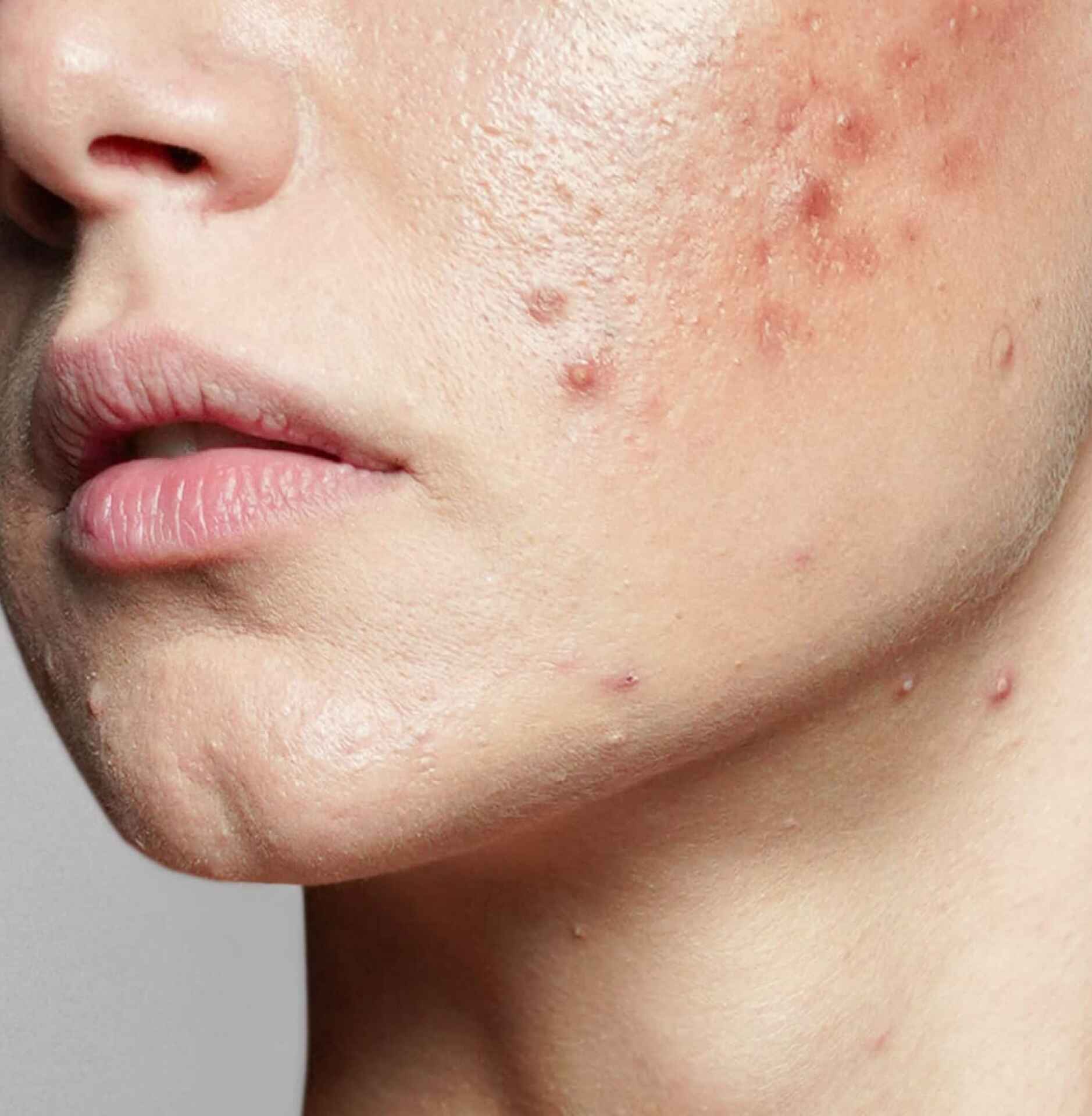Does your acne persist despite trying multiple over-the-counter treatments? Finding the best acne treatment Singapore offers depends on matching the appropriate therapy to your specific acne type, severity, and skin characteristics. Dermatology clinics provide multiple evidence-based approaches from topical retinoids that normalize skin cell turnover to oral isotretinoin that reduces sebum production. Each treatment works through different mechanisms: some target bacteria, others reduce inflammation, and some address hormonal triggers. The path to results involves understanding these mechanisms and selecting treatments based on your acne’s root causes rather than surface symptoms alone.
Combination therapy often produces outcomes when compared to single treatments. An approach might pair benzoyl peroxide’s antibacterial action with a retinoid’s pore-clearing effects, or combine oral antibiotics with topical treatments to address both inflammatory and comedonal acne simultaneously. A healthcare professional can help determine the most appropriate treatment plan for your specific condition.
Understanding Your Acne Type
Different acne types respond to different treatments. Comedonal acne – characterized by blackheads and whiteheads – forms when dead skin cells and sebum block pores without significant inflammation. These lesions may respond to retinoids, which accelerate skin cell turnover and prevent pore blockages.
Inflammatory acne presents as red papules and pustules containing pus. This type involves Cutibacterium acnes bacteria proliferation within blocked pores, triggering an immune response. Benzoyl peroxide and antibiotics target this bacterial component, while anti-inflammatory agents like niacinamide may help reduce redness and swelling.
Nodular and cystic acne develops deep within the skin, forming painful lumps that can persist for weeks. These severe forms often require oral medications like isotretinoin or hormonal treatments, as topical applications cannot penetrate deeply enough to address the inflammation occurring in lower skin layers.
Hormonal acne typically appears along the jawline and chin, fluctuating with menstrual cycles. This pattern indicates androgen sensitivity, where hormones stimulate excess sebum production. Anti-androgen medications like spironolactone or specific oral contraceptives can regulate these hormonal triggers.
Topical Treatments
Retinoids are commonly used in acne treatment, with adapalene, tretinoin, and tazarotene available in varying strengths and formulations. These vitamin A derivatives may help prevent comedone formation by normalizing skin cell shedding within pores. Adapalene 0.1% may provide a gentler option for sensitive skin, while tretinoin concentrations from 0.025% to 0.1% are available for different treatment needs.
Benzoyl peroxide works by eliminating acne bacteria through oxidation, releasing oxygen into the anaerobic environment where *C. acnes* thrives. Lower concentrations may be as effective as higher formulations with fewer side effects. The medication continues working throughout the day, and once-daily application may be sufficient for many patients.
Azelaic acid serves dual purposes – killing bacteria and reducing post-inflammatory hyperpigmentation. At therapeutic concentrations, it normalizes keratinization while brightening dark marks left by healed acne. This makes it particularly relevant for patients with darker skin tones who experience persistent pigmentation.
Salicylic acid penetrates oil-filled pores due to its lipophilic nature, dissolving debris that causes blackheads and whiteheads. Daily use of therapeutic formulations may help keep pores clear while providing mild anti-inflammatory benefits. The ingredient is commonly found in cleansers and leave-on treatments for oily skin types.
Did You Know?
Retinoids increase skin photosensitivity even on cloudy days. The heightened sun sensitivity persists throughout treatment. Daily SPF 30+ sunscreen application is recommended regardless of weather conditions. Consult a healthcare professional for appropriate treatment guidance.
Oral Medications for Acne
Oral antibiotics like doxycycline and minocycline reduce inflammatory acne through both antimicrobial and anti-inflammatory mechanisms. These tetracyclines concentrate in sebaceous glands, directly targeting the site of acne formation. Treatment duration and dosage should be determined by a healthcare professional.
Isotretinoin addresses severe acne treatment by targeting all pathogenic factors simultaneously. The medication shrinks sebaceous glands, reduces sebum production, normalizes skin cell shedding, and decreases *C. acnes* colonization. The appropriate dosage and treatment duration should be determined by a qualified healthcare professional based on individual patient factors.
Hormonal treatments target androgen-driven sebum production in female patients. Spironolactone blocks androgen receptors, while certain oral contraceptives containing ethinyl estradiol with progestins like drospirenone reduce free testosterone levels. The appropriate dosage should be determined by a healthcare professional. These medications particularly benefit women whose acne worsens before menstruation or concentrates along the lower face.
Important Note
Isotretinoin requires strict pregnancy prevention due to severe birth defect risks. Female patients must use two forms of contraception and undergo monthly pregnancy tests throughout treatment and for one month after completion.
Professional Procedures and Laser Treatments
Chemical peels accelerate skin renewal using controlled acid applications. Salicylic acid peels penetrate pores to remove comedones, while glycolic acid peels improve skin texture and reduce hyperpigmentation. Dermatologists may perform these treatments every 2-4 weeks during active treatment phases.
Light therapy targets acne through multiple wavelengths. Blue light (415nm) activates porphyrins produced by *C. acnes*, generating reactive oxygen species that destroy bacteria. Red light (630-660nm) reduces inflammation and promotes healing. Combined blue-red light treatments may be performed twice weekly and can improve inflammatory lesion counts.
Laser treatments provide deeper tissue penetration for persistent acne. The 1450nm diode laser heats sebaceous glands to reduce activity, while fractional lasers like CO2 and erbium create microscopic treatment zones that trigger collagen remodeling. These procedures address both active acne and scarring simultaneously.
Photodynamic therapy combines aminolevulinic acid application with specific light wavelengths. The photosensitizer accumulates in sebaceous glands and acne lesions, producing targeted destruction when activated by light. This treatment reduces sebum production for several months following a series of sessions.
Combination Approaches
Dermatologists frequently prescribe multiple treatments targeting different acne mechanisms. A common combination pairs topical retinoids with benzoyl peroxide – the retinoid prevents comedones while benzoyl peroxide eliminates bacteria. The timing and application method for these medications should be determined by a healthcare professional.
For moderate inflammatory acne, oral antibiotics combined with topical retinoids may provide improvement. The antibiotic can help reduce inflammation while the retinoid provides long-term pore normalization. Treatment duration and transition to other therapies should be guided by a healthcare professional.
Severe acne may require sequential therapy – starting with oral antibiotics and topical treatments to reduce inflammation before initiating isotretinoin. This approach can help minimize the initial acne flare sometimes experienced with isotretinoin while preparing skin for the intensive treatment course.
Maintenance therapy prevents recurrence after clearing active acne. Topical retinoids remain the primary maintenance treatment, sometimes combined with benzoyl peroxide or azelaic acid. This ongoing approach maintains clear skin while preventing the antibiotic resistance associated with long-term oral antibiotic use.
What a Dermatologist Says
Clinical assessment reveals patterns invisible to patients. Subtle comedones around the nose and forehead often indicate upcoming inflammatory lesions. Early intervention at this stage may help prevent progression to painful cysts and reduce scarring risk.
Skin barrier health significantly impacts treatment tolerance and effectiveness. Patients who maintain proper hydration and avoid over-cleansing may experience fewer side effects from retinoids and other active ingredients. A gentle cleanser, lightweight moisturizer, and gradual treatment introduction may help optimize outcomes.
Acne Treatment adjustments based on response patterns may improve long-term success. Some patients may require stronger retinoid concentrations after initial improvement plateaus, while others may benefit from adding targeted treatments for specific lesion types. Regular follow-ups allow these refinements.
Putting This Into Practice
- Start documenting your acne patterns using smartphone photos taken in consistent lighting weekly. Note breakout timing, location, and any correlating factors like stress, diet changes, or menstrual cycle phases. This information helps dermatologists identify triggers and select appropriate treatments.
- Establish a consistent twice-daily skincare routine using gentle, non-comedogenic products. Morning routines should include cleanser, treatment products, moisturizer, and sunscreen. Evening routines allow for stronger treatments after cleansing, as skin repairs overnight without sun exposure concerns.
- Introduce new treatments gradually to minimize irritation. Begin retinoids every third night for two weeks, then every other night for two weeks before attempting nightly use. Apply pea-sized amounts to completely dry skin 20-30 minutes after cleansing.
- Track treatment response objectively by counting lesions monthly and rating severity on a consistent scale. Improvement often occurs gradually, with some treatments causing temporary worsening before improvement begins.
- Maintain realistic timelines for different treatment goals. Inflammatory lesions may improve within several weeks, comedones require longer to clear, and results from most treatments emerge after several months of consistent use.
When to Seek Professional Help
- Acne persists despite 8-12 weeks of over-the-counter treatment
- Painful, deep cysts or nodules develop
- Dark marks or pitted scars form after acne heals
- Acne appears suddenly in adulthood after clear skin
- Breakouts concentrate along jawline with menstrual correlation
- Over-the-counter products cause persistent irritation or allergic reactions
- Acne significantly impacts self-esteem or daily activities
- Multiple product trials produce no improvement
Commonly Asked Questions
How long before I see results from prescription acne treatments?
Most topical prescriptions show initial improvement after 4-6 weeks, with continued improvement over 12 weeks. Oral antibiotics often reduce inflammation within 2-3 weeks, while isotretinoin may temporarily worsen acne before improvement begins around week 6-8. Complete clearing typically requires 3-4 months of consistent treatment.
Can I use multiple acne treatments simultaneously?
Certain combinations enhance effectiveness while others increase irritation. Benzoyl peroxide pairs well with retinoids when used at different times. However, combining multiple exfoliating ingredients like retinoids, salicylic acid, and glycolic acid often causes excessive dryness. Healthcare professionals design combination regimens that balance benefits while minimizing side effects.
Why does my acne return after stopping treatment?
Acne remains a chronic condition requiring ongoing management for many people. Stopping treatment allows the underlying factors – excess sebum, abnormal skin cell shedding, and bacterial proliferation – to resume. Maintenance therapy using gentler formulations often prevents recurrence while minimizing long-term side effects.
Does diet really affect acne?
High-glycemic foods and dairy products may worsen acne in susceptible individuals through hormonal pathways. Refined sugars trigger insulin spikes that increase androgen activity and sebum production. Keeping a food diary alongside your acne tracking helps identify personal dietary triggers, though dietary changes alone rarely clear acne completely.
What’s the difference between purging and breaking out from new products?
Purging occurs when treatments like retinoids accelerate skin cell turnover, bringing existing comedones to the surface faster. This temporary worsening happens in areas where you normally break out and resolves within 4-6 weeks. True breakouts from product reactions appear in new areas and persist or worsen with continued use.
Next Steps
Effective acne treatment requires matching therapies to your specific acne type and selecting treatments that target underlying causes. Professional assessment identifies whether you need topical retinoids for comedonal acne, systemic treatments for severe inflammation, or combination approaches for complex presentations.
If you’re experiencing persistent acne, painful cysts, or acne scarring, a dermatologist can provide comprehensive evaluation and evidence-based treatment options.

